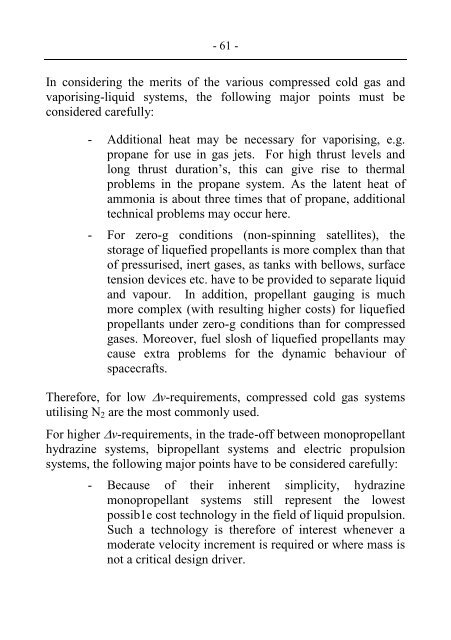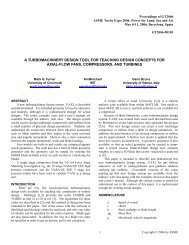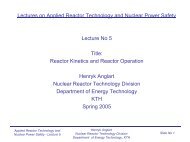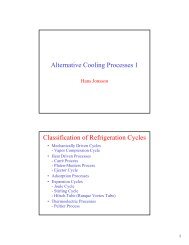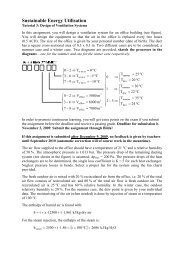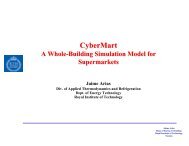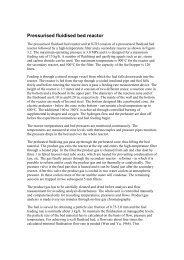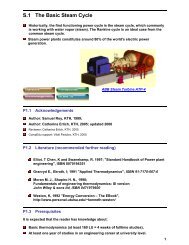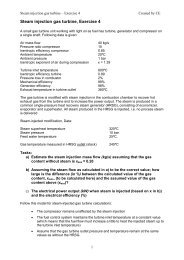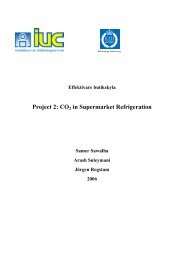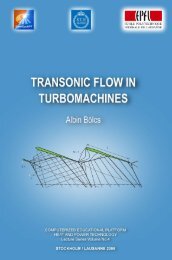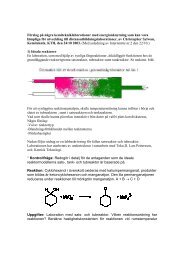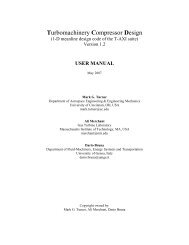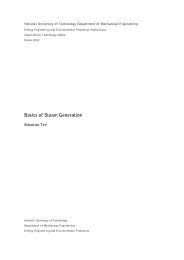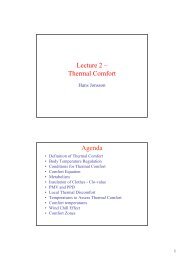SPACECRAFT PROPULSION - KTH
SPACECRAFT PROPULSION - KTH
SPACECRAFT PROPULSION - KTH
- No tags were found...
Create successful ePaper yourself
Turn your PDF publications into a flip-book with our unique Google optimized e-Paper software.
- 61 -In considering the merits of the various compressed cold gas andvaporising-liquid systems, the following major points must beconsidered carefully:- Additional heat may be necessary for vaporising, e.g.propane for use in gas jets. For high thrust levels andlong thrust duration’s, this can give rise to thermalproblems in the propane system. As the latent heat ofammonia is about three times that of propane, additionaltechnical problems may occur here.- For zero-g conditions (non-spinning satellites), thestorage of liquefied propellants is more complex than thatof pressurised, inert gases, as tanks with bellows, surfacetension devices etc. have to be provided to separate liquidand vapour. In addition, propellant gauging is muchmore complex (with resulting higher costs) for liquefiedpropellants under zero-g conditions than for compressedgases. Moreover, fuel slosh of liquefied propellants maycause extra problems for the dynamic behaviour ofspacecrafts.Therefore, for low v-requirements, compressed cold gas systemsutilising N 2 are the most commonly used.For higher v-requirements, in the trade-off between monopropellanthydrazine systems, bipropellant systems and electric propulsionsystems, the following major points have to be considered carefully:- Because of their inherent simplicity, hydrazinemonopropellant systems still represent the lowestpossib1e cost technology in the field of liquid propulsion.Such a technology is therefore of interest whenever amoderate velocity increment is required or where mass isnot a critical design driver.


